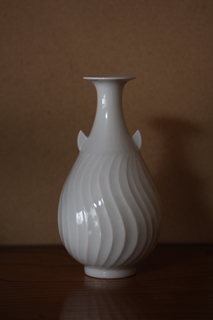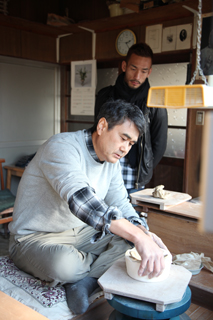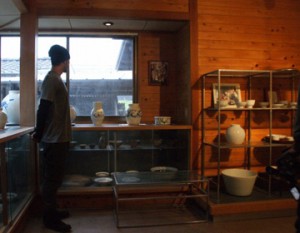White porcelain made 1000 years ago

Hiroaki Tsutsui is a ceramic artist in Azumino, Nagano. Before starting his own workshop, he spent 4 years in Ishikawa Prefecture to practice Kutani pottery. And from 1976, he studied in Kyoto under Uichi Shimizu and Mitsuyuki Kawase, both known as great masters of ceramics. Later in 1980, he returned to Nagano and set up his own kiln, and has been making art pieces since.
First, Nakata was shown a white porcelain vessel made in China some 1000 years ago. Tsutsui was stunned by the presence of the porcelain, and has been devoted to the world of porcelain ever since.
Tsutsui’s white porcelain works are known for possessing mysterious charm, as if the artwork is wrapped in soft light. Another characteristic of his works is the ”line” which no other craftsmen make. In making ”sake” bottles and vessels, any craftsmen use curves to express the beauty of their work. But in Tsutsui’s works the ”line” is the main characteristic. The line doesn’t show any rigidness. In fact, it enhances the work’s overall softness.
Trial and error

Although he has received numerous awards in Japan and abroad, Tsutsui has always continued to challenge new things. For example, work called ”Saiyu Jimentori Sake Bottle”. He got the inspiration from pictures drawn by nursery school children when he visited his son’s nursery school. ”This is interesting. I wonder if there is a way to express the charm of these pictures with porcelain.”
And from there, his trial-and error started. In order to produce the desired color, he experimented so many times by changing the combination of the temperature of the kiln and color of paint.
The soft delicate colors he was finally able to produce are the result of his effort and skill.
At the workshop, we were allowed to observe the process of fitting clay in the mold to shape. Kneaded clay is rolled out evenly, sliced thinly, and then embedded to the plaster mold in the shape of a lotus leaf. Once the shape is fixed on the clay, it is let dry a little, then removed from the mold, and finally the inside of clay is carved out.
Similarly, we were able to see the process of fitting the mold to the inside of craft ware.
”Traditional technique has a long history, and it is to be respected. After practicing it, I think it important to keep creating something new.” Tsutsui told us.
Charm of porcelain crossed the sea from ancient China to Japan, and it has continued to prosper today.




